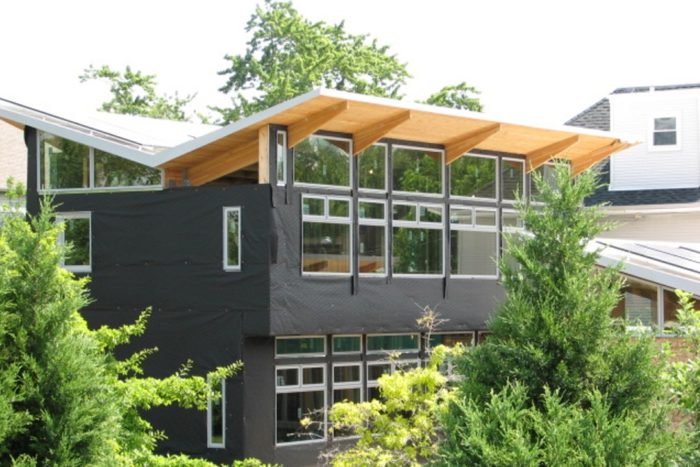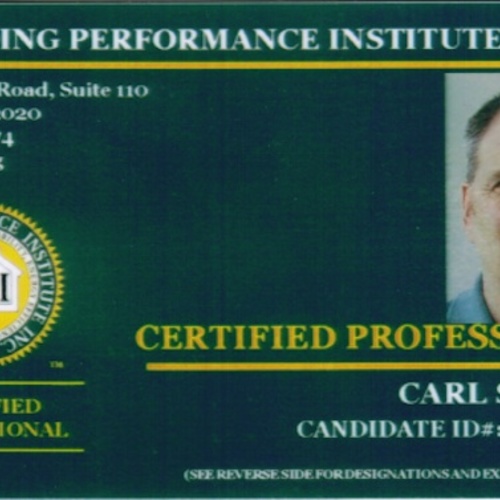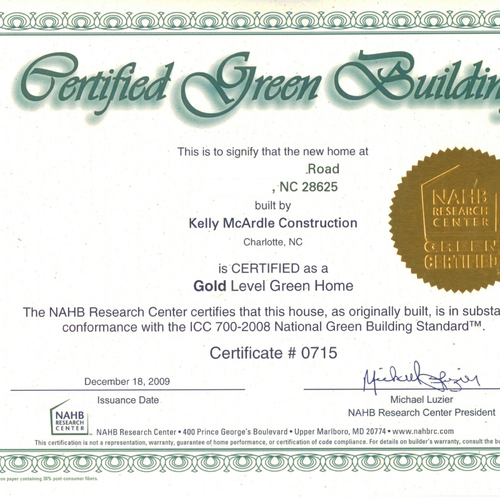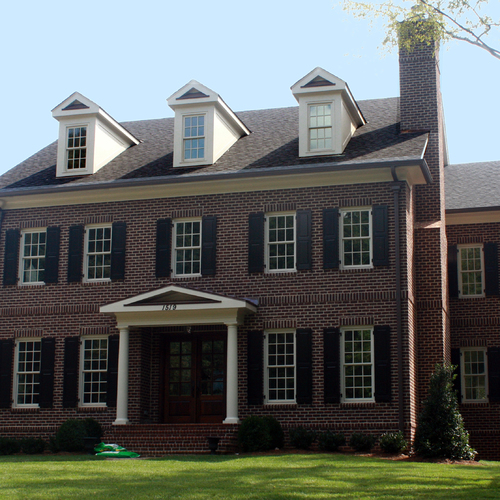
Image Credit: Farr Associates Architecuture
I recently attended several conferences in Raleigh, North Carolina, few hours from my home: the national RESNET conference, the National Green Building Conference, the North Carolina Home Builders Association’s Building Code Council and Green Building Council. At each of these meetings, the new IRC Energy Code and the new Energy Star standards were discussed. (There are lots of big changes headed our way.)
The green building community, for the most part, welcomed these changes with open arms and was generally excited that the code-makers were getting serious about energy efficiency. In contrast, the non-green building community was terrified at these changes. At one point, they were practically running around in a state of panic, talking about “door blaster tests.”
So I began to think of ways that I could help these builders understand that green building is not so hard. I decided to write about my journey from the beginning — a custom builder’s journey to green.
Straw bales and butterfly roofs?
When I first heard of green building, I thought it was more about materials than anything else. The examples of green buildings I had seen all appeared to be very modern, with rectilinear architecture and butterfly roofs. Such features would not really fit into our line of work, which was mainly traditional infill housing.
As the years passed, I continued to hear more about green building and building science, and was very curious about some of the new systems that I was seeing, like closed crawl spaces, conditioned (unvented) attics, and tight building envelopes.
As custom builders, we wanted to come up with a way to really differentiate ourselves from the competition. I’m a co-owner of Kelly McArdle Construction; our company was already building high-quality houses, and I believe we had an above-average management process. Could we use green building to really separate us from the crowd? I decided to explore the idea of green building some more.
Understanding building science
Before incorporating these new techniques and systems into our houses, I wanted to be sure I understood the science behind them. What are some possible problems? What can go wrong? How do we control quality? Talking to all of the different subcontractors was very confusing. The more I learned about each system, the more I learned that everyone had a different approach. In fact, some people installing these systems really did not understand how they worked.
There came a point in my journey when I realized I was hooked. I started reading everything I could on green building, keeping an eye out for building science classes as traveling instructors came through town. I took the half-day and full-day classes of all the available programs: Energy Star, HealthyBuilt Homes, EarthCraft House, LEED for Homes, and Environments for Living.
How should we choose a program to enroll in? The one thing I kept hearing over and over is, “Walk, jog, run” — which felt like the correct approach for our company. I also learned that Energy Star was the basis for all the programs, so I decided we should begin there.
Danny Kelly is a co-owner of Kelly McArdle Construction in Charlotte, North Carolina.
Weekly Newsletter
Get building science and energy efficiency advice, plus special offers, in your inbox.















4 Comments
Green transition
Danny,
Thanks for your article, adding building performance to the mix makes contracting a whole lot more interesting. I was fortunate to get my introduction to "superinsulation" in 1983 when I visited a local architect with some ideas for what I thought were energy efficient homes. I was ready to offer something different after a really rough period of high interest rates (late 70's, early 80's) when the building industry went into hiding.
My idea of an energy efficient house employed large amounts of South facing glass and direct beam thermal storage with little focus on the building envelope. My consulting architect (Richard Burns) convinced me that a very will insulated and airtight structure would yield the highest performance. This started my journey into R-50 double walls with modest amounts of glass and a ach50 target of 1 or thereabout. and I have never looked back.
Superinsulation is where the action is with very low energy bills and occupant comfort the highlights. This type of building will bring far more referrals than any amount of advertising and will gain strong customer relations. A dedicated builder could and should offer performance guarantees as part of the building package.
Great article! Thanks a lot
Great article! Thanks a lot for a layman's perspective on getting started as a green builder.
Butterfly roof
Danny, Did you build this house? I am working with a client right now and the design of the entire home is remarkably similiar to your photo. We are under pricing pressure and would be most interested in learning about any design details and specifications you might be welling to share.
From a fellow blogger for Green Building Advisor, michael
Butterfly Roof
Hi Michael - yes we meet in Raleigh at the National Green Building Conference. I see you will be in Charlotte later in the year as well. Hope to catch up then - hope you are doing well.
No - we did not build that house - I belive Martin used a stock photo to go along with the article. We did do a very similar roof a few years ago. Roof was framed with timbers and we used SIPS for the roof decking. Will be happy to discuss that with you if that will help. [email protected]
Log in or create an account to post a comment.
Sign up Log in